ORP-HPT03SA Patient Transfer Medical Stretcher
A medical stretcher is a specialized apparatus designed for the safe transport of patients within healthcare facilities and in emergency medical situations. It serves as a fundamental piece of equipment in hospitals, cliniques, and ambulances, providing a stable and secure platform for moving individuals who are injured, ill, or otherwise unable to walk. Medical stretchers are typically equipped with various features to enhance patient comfort and safety, such as adjustable back sections, hydraulic height adjustment, and secure locking wheels. They often include additional functionalities like IV poles for fluid and medication administration, bumper wheels to minimize impact damage, and emergency handles to facilitate rapid and controlled movement. Made from durable materials like stainless steel and equipped with smooth-rolling casters, medical stretchers are designed to withstand frequent use and the demands of emergency care, all while ensuring the patient’s well-being during transport.
Paramètre technique:
| Hauteur du lit minimale | 600mm |
| Hauteur du lit maximale | 903mm |
| Taille de la plateforme | 1940*620mm |
| Plateforme de matelas | 2100*800mm |
| Charge de travail sûre | 250kg |
| Dossier | 75°±5° |
| Repose-genoux | 30°±5° |
| Trendelenbourg | 15°±5° |
| Trendelenburg inversé | 15°±5° |
Configuration technique:
| Pompe hydrolique | 2pièces |
| Manivelle | 2pièces |
| Ressort à gaz du dossier | 1ordinateur |
| 8'' Lanceur | 4pièces |
| Pédale de verrouillage centralisé | 2pièces |
| Pédale de déblocage des roues directionnelles | 2pièces |
| Pédale de contrôle des fonctions | 1ensemble |
| Poignée de poussée d'urgence | 2ensembles |
| Roue directionnelle | 1ordinateur |
| Rail latéral pliable | 1ensemble |
| Poteau IV | 2ensembles |
| Prévisions du pôle IV | 4pièces |
| Roue de pare-chocs | 4pièces |
Présentation du produit:
Contrôle de qualité:
- Technologie: The technology behind modern medical stretchers has significantly evolved to enhance durability, sécurité, and functionality in emergency healthcare environments. Central to this advancement is the use of cold-rolled steel sheets, which form the structural foundation of these stretchers. Cold-rolled steel is preferred for its superior strength, lighter weight, and smoother surface compared to hot-rolled steel. This makes the stretcher not only robust but also more maneuverable and comfortable for patients. En plus, these stretchers are treated with an electrophoretic coating followed by a powder coating process. The electrophoretic coating technique involves applying a charged paint emulsion to the metal, which is then cured to form a uniform layer that resists corrosion, scratching, and chipping. Over this, a layer of powder coating is applied, which not only enhances the aesthetic appeal with a uniform, durable finish but further improves the resistance to corrosion, impacts, and chemicals. This combination of advanced materials and coatings ensures that medical stretchers can withstand rigorous use in various environments, from hospitals to emergency field situations, while maintaining hygiene and patient comfort.
- Norme de sécurité: Medical stretchers are subject to stringent safety standards to ensure they meet the critical requirements of healthcare settings. Specifically, stretchers that comply with ISO 13485:2016 demonstrate a robust quality management system tailored for the design and manufacture of medical devices, ensuring consistency in quality and safety. En plus, adhésion à l'ISO 9001:2015 underscores a commitment to general quality management practices, focusing on meeting customer and regulatory requirements while aiming for continual improvement. Beyond these standards, medical stretchers that carry CE certification meet the health, sécurité, et des normes de protection de l'environnement pour les produits vendus dans l'Espace économique européen. This certification is crucial as it not only verifies that the product meets EU safety, santé, and environmental requirements but also assures the stretcher’s conformity to European patient safety standards. Collectively, these certifications provide healthcare providers and patients with confidence that the stretchers are reliable, sûr, and of high quality, thereby reducing risks during medical emergencies and transport scenarios.
Cadre:
- Plate-forme: The platform of a medical stretcher is ingeniously designed to enhance both patient comfort and medical efficiency, particularly during diagnostic procedures. It is segmented into four distinct parts: la partie arrière, hip section, section de cuisse, and lower leg section. This segmentation allows for adjustable positioning depending on the specific medical requirements or the comfort needed for the patient. A significant feature of this platform is that it is made from materials that are transparent to X-rays. This design choice is crucial as it enables full-body X-rays to be conducted directly on the stretcher without the need to move the patient. Such a feature not only minimizes the physical strain on patients, especially those in critical condition, but also speeds up the diagnostic process, ensuring that patients can be assessed quickly and accurately. This integration of X-ray transparent materials into the stretcher’s platform exemplifies the thoughtful engineering aimed at optimizing medical care and patient safety.
- Pliable Rail latéral: The side rails of a medical stretcher are a critical component, designed to ensure patient safety and facilitate medical procedures. Made from stainless steel, these rails are not only robust and durable but also easy to clean, which is essential for maintaining hygiene in medical environments. The side rails are foldable, allowing for easy adaptation to various medical situations, such as patient transfer or treatment. Pour renforcer la sécurité, the rails incorporate an anti-trap design that prevents accidental pinching or trapping of limbs between the rails, which is crucial for patient protection. En plus, the rails are equipped with a guardrail latch mechanism that prevents them from folding unexpectedly, thereby ensuring that they remain securely in place when needed. To fold the rails, one simply lifts the latch mechanism, which is an intuitive and straightforward process. This feature is particularly beneficial during critical moments when quick and unobstructed access to the patient is necessary, such as during emergency treatments or when transferring patients to and from the stretcher.
- Base: The base of a medical stretcher is designed with functionality and durability in mind, incorporating a dust cover made from PP (polypropylène) matériel. Polypropylene is chosen for its robustness, high temperature resistance, and its ability to withstand frequent cleaning and disinfection, ce qui le rend idéal pour les environnements exigeants des établissements médicaux. This dust cover not only protects the internal mechanisms of the stretcher from dust and debris, which could potentially interfere with its operation, but also contributes to the overall hygiene of the stretcher. An additional practical feature of the stretcher base is the inclusion of dedicated slots or compartments. These are specially designed to securely hold essential emergency medical supplies, such as oxygen cylinders, thus ensuring that lifesaving equipment is readily accessible when needed. This thoughtful integration of storage solutions into the stretcher’s design enhances the efficiency of medical response in emergency situations by keeping critical tools within easy reach.
Fonction:
Les fonctions suivantes sont contrôlées par le PÉDALE À PIED:
- Trendelenburg/Trendelenburg inversé: The Trendelenburg and Reverse Trendelenburg capabilities are vital features in modern medical stretcher, offrant une polyvalence significative dans le positionnement du patient. These positional adjustments are critical in various medical and emergency situations where altering a patient’s body orientation can have therapeutic benefits or be necessary for certain procedures. The Trendelenburg position involves tilting the stretcher so that the patient’s feet are elevated higher than the head by about 15°±5°, which can help improve venous return to the heart, beneficial in cases of shock or low blood pressure. inversement, the Reverse Trendelenburg position raises the head higher than the feet by the same degree. This position is often used during surgical procedures involving the abdomen or for patients experiencing respiratory issues, as it helps to reduce pressure on the diaphragm and enhance lung expansion. The precise control of these angles, within a range of ±5°, allows healthcare providers to adjust the stretcher to the optimal level for the specific medical needs of the patient, thereby enhancing treatment efficacy and patient comfort. These features underscore the stretcher’s design focus on patient safety and care optimization.
- Réglage de la hauteur de la civière entière: The ability to adjust the height of a medical stretcher is a critical feature that enhances both patient care and caregiver ergonomics. Modern medical stretchers are designed with a variable height adjustment feature, typically ranging from 600mm to 903mm. This adjustable height mechanism allows healthcare providers to set the stretcher to the optimal level for various medical procedures and patient needs. Par exemple, a lower height can facilitate easier transfer of patients from the bed to the stretcher, reducing the risk of injury for both patients and healthcare workers. inversement, a higher setting can be beneficial during medical examinations or procedures, allowing caregivers to work at a comfortable height without the need to stoop, thereby preventing strain or back pain. This feature is particularly valuable in emergency and surgical settings, where precision and adaptability are crucial. The range of height adjustment ensures that the stretcher can be quickly and easily adapted to meet the specific requirements of different medical environments, enhancing overall efficiency and safety.
Les fonctions suivantes sont contrôlées par le MANIVELLE:
- Ajustement de la section des jambes: The leg section adjustment on medical stretcher is a crucial feature designed to enhance patient comfort and facilitate various medical procedures. On many modern stretchers, the leg section can be manually adjusted, providing a range of motion that typically includes an elevation up to 30°±5°. This manual adjustment mechanism allows healthcare providers to tailor the positioning of the patient’s legs to specific needs, such as reducing lower limb swelling, améliorer la circulation, or preparing a patient for surgery or recovery. The ability to adjust the leg section easily and precisely is particularly important in emergency and long-term care settings, where patient comfort and the conditions for medical treatment must be optimized continually. The degree of elevation allows for flexibility in patient care management, ensuring that the stretcher can accommodate various medical scenarios and patient requirements efficiently, thereby enhancing the overall effectiveness of the healthcare provided.
- X-ray Box Adjustment: The X-ray box adjustment on medical stretcher is an integral feature that significantly enhances the capability of conducting diagnostic imaging directly on the stretcher. This adjustment is typically controlled by a manual crank or hand lever, allowing healthcare providers to precisely position the X-ray cassette holder underneath the specific area of the patient’s body that requires imaging. This feature is particularly beneficial in emergency or critical care settings, where moving a patient may be detrimental to their condition or where swift diagnostic capabilities are necessary. By enabling the X-ray box to be moved seamlessly to the desired location beneath the stretcher platform, it ensures that high-quality imaging can be achieved without the need to transfer the patient to a separate radiology unit. This not only streamlines the process of obtaining essential diagnostic information but also enhances patient safety and comfort by minimizing unnecessary movements.
La fonction suivante est contrôlée par le POIGNÉE:
- Ajustement de la section arrière: The back section adjustment on medical stretcher is a critical feature designed to enhance patient comfort and facilitate various medical and emergency interventions. This adjustment is typically achieved through a user-friendly mechanism involving a lever located beneath the back section. En appuyant sur ce levier, healthcare providers can lift the back section to the required angle, with the assistance of gas springs that provide smooth and controlled elevation. The back section can be adjusted up to an angle of 75°±5°, allowing for a significant range of positions. This capability is essential for procedures that require the patient to be in a semi-upright or fully upright position, such as during respiratory therapy, certain examinations, or while eating and communicating. The use of gas springs ensures that the adjustment is not only precise but also requires minimal effort, thereby preventing strain on medical staff and providing a more comfortable experience for the patient. This adjustability feature significantly contributes to the stretcher’s versatility, making it an indispensable tool in various healthcare settings.
Accesseuroui Détail:
- Pompe hydrolique: The hydraulic pump system on medical stretcher plays a pivotal role in enhancing the functionality and usability of these essential healthcare tools. Featuring two hydraulic pumps, the system is designed to control both the height and the tilt (both Trendelenburg and Reverse Trendelenburg positions) de la civière. This dual-pump configuration allows for more precise adjustments, ensuring that the stretcher can be smoothly and accurately positioned to meet specific medical needs or patient comfort requirements. The hydraulic mechanism offers a significant advantage in terms of stability and noise reduction compared to mechanical adjustment systems. This is crucial in a medical environment, where maintaining a calm and stable setting is essential for patient care. The quiet operation of the hydraulic pumps minimizes disturbance, thus enhancing the overall patient experience, especially during sensitive procedures or when patient comfort is paramount. En plus, the hydraulic system’s reliability and ease of use make it an ideal choice for healthcare settings, ensuring quick and efficient adjustability that can adapt to the dynamic conditions of emergency care and routine patient management.
- Jeterest: The casters on a medical stretcher are crucial for ensuring mobility and ease of handling, particularly in fast-paced and varied healthcare environments. Each stretcher is typically equipped with four robust 200mm diameter wheels, which are notably larger than many standard stretcher casters. The increased size of these wheels plays a vital role in reducing the effort required to push the stretcher, thereby enhancing maneuverability and decreasing the physical strain on healthcare workers. Larger wheels are also more adept at overcoming obstacles, which is particularly important when the stretcher needs to be moved quickly in emergency situations across different indoor and outdoor terrains. The material used for these casters, TPE (thermoplastic elastomer), is selected for its excellent heat resistance and corrosion-proof qualities, making it durable in various environmental conditions and resistant to the harsh chemicals often used for cleaning and disinfection in medical settings. This combination of size, matériel, and design ensures that the stretcher can be transported smoothly and swiftly, maintaining stability and safety for the patient while providing ease of use for medical personnel.
- Verrouillage centralisé Pédale: The central locking pedal on a medical stretcher is a critical safety feature designed to enhance control and stability during the transport of patients. Positioned at both the head and the foot ends of the stretcher, these pedals enable healthcare providers to control all the casters simultaneously with a simple foot action. By pressing down on the red side of the pedal, an integrated braking system is activated, locking all wheels at once and ensuring the stretcher remains stationary. This is particularly important during medical procedures or when the stretcher needs to be securely parked, providing stability and safety for both the patient and medical staff. inversement, pressing down on the green side of the pedal releases the brakes, allowing the stretcher to be moved freely. This system not only simplifies the process of securing and mobilizing the stretcher but also enhances the efficiency of response in emergency situations, where time and safety are of the essence. The intuitive color coding (red for stop, green for go) further aids in ease of use, making it straightforward for staff to operate the stretcher safely under high-pressure conditions.
- Roue directionnelle avec pédale de commande: The directional wheel system on medical stretchers is an invaluable feature that enhances maneuverability and control, particularly in urgent and complex environments. A key component of this system is the inclusion of a fifth wheel, often referred to as the steering or guide wheel. This fifth wheel can be engaged or disengaged using a pedal system, usually marked with intuitive color coding for ease of use. En marchant sur le côté rouge de la pédale, the directional wheel is lowered to the ground, which restricts the movement of the stretcher to a straight line. This linear directionality is crucial during emergencies when a swift and stable motion directly to a destination is necessary, such as moving through long corridors quickly or navigating towards an operating room. inversement, pressing the green side of the pedal lifts the directional wheel, allowing the stretcher to move freely in any direction. This versatility is essential for maneuvering in tight spaces, around corners, or when adjusting the stretcher’s position in crowded areas. The system thus provides vital flexibility, enabling healthcare professionals to adapt quickly to the dynamics of different scenarios while ensuring patient safety and comfort.
- Poteau IV&Prévisions du pôle IV: The IV pole and its previsions on medical stretcher are designed to cater to the essential needs of patient care, particularly for administering intravenous treatments. Each stretcher typically comes equipped with two height-adjustable IV poles made from durable stainless steel, ensuring longevity and ease of cleaning. These poles feature four hooks each, permettant de suspendre plusieurs sacs IV simultanément, accommodating the complex medication regimens often required in acute care settings. For convenience and space efficiency, these IV poles are strategically designed to fold down when not in use. They are typically located at the head and the side of the stretcher, enabling quick deployment and secure locking into place when needed. This ensures that they are both accessible and unobtrusive to healthcare workers moving around the stretcher. En plus, the stretcher includes four IV pole sockets distributed along the bed’s edges. This thoughtful design allows for the attachment of extra IV poles, catering to situations where additional intravenous lines are necessary. This flexibility is crucial in emergency or intensive care scenarios, where rapid and adaptable patient treatment is required.
- Poignée de poussée d'urgence: The emergency push handle on medical stretcher is a critical feature designed for high-stress scenarios, enabling healthcare professionals to exert additional force and control when urgently moving a patient. This handle is especially useful in emergency situations where speed and maneuverability are paramount. To accommodate the often cramped spaces within medical facilities, the push handle is equipped with a foldable design. This allows it to be tucked away when not in use, thereby conserving valuable space around the stretcher and ensuring that the handle does not obstruct medical staff during non-emergency care or when the stretcher needs to be stored. When required, the handle can be quickly deployed, providing a sturdy and ergonomic grip that enhances the ease and safety with which medical personnel can navigate through corridors, into elevators, or around obstacles. This design not only maximizes the functionality of the stretcher in urgent situations but also maintains the sleekness and compactness needed in modern medical environments.
- Roue de pare-chocs: The bumper wheels on medical stretcher play a vital role in enhancing the safety and durability of both the stretcher and the healthcare environment. Strategically positioned at each of the four corners of the stretcher, these wheels are crafted from a soft, impact-absorbing material designed to cushion and dissipate the force generated during collisions. This design is particularly important in fast-paced medical settings where stretchers are frequently moved through narrow hallways and crowded rooms, increasing the risk of accidental impacts with walls, door frames, or other equipment. The bumper wheels effectively protect the stretcher from damage, preserve the integrity of hospital infrastructure, and most importantly, safeguard the patient from jolts that could exacerbate their condition. En plus, by minimizing the potential for damage and injury, these bumper wheels help reduce maintenance costs and enhance the overall safety of medical operations, ensuring that the stretcher remains a reliable tool in the critical care pathway.
PÉDALE À PIED
The left is whole stretcher lifting pedal, press down and lifted by hydraulic system.
The middle is reverse Trendelenburg, whole stretcher lower, and Trendelenburg function pedal.
The right is directional wheel control pedal, press to release the 5th wheel, so that the stretcher can run in a straight line only.
RAIL LATÉRAL
Foldable metal side rail, with anti-stuck position design, away from the risk of limb injury. With safe lock, cannot be folded accidently.
BASE
PP material dust cover, durable high temperature resistance, with a slot, can be placed oxygen cylinders and other emergency equipment or other items.
ROULETTE
Quatre roulettes de 200 mm, plus le diamètre des roulettes est grand, moins il y a d'effort pour pousser, meilleure est la capacité à surmonter les obstacles, adapté à une mise en œuvre rapide dans des situations d'urgence dans différents environnements intérieurs et extérieurs. Matériau TPE, résistance à la chaleur, résistance à la corrosion.
DOSSIER
Press the handle under the backplane to lift it to the required position. Gas spring lift. Lifting for 75°±5°.




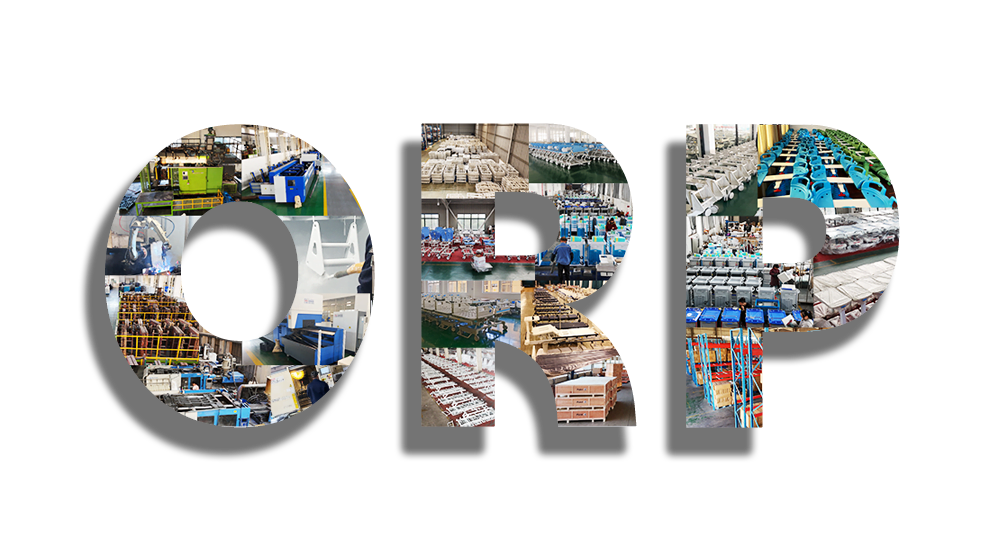




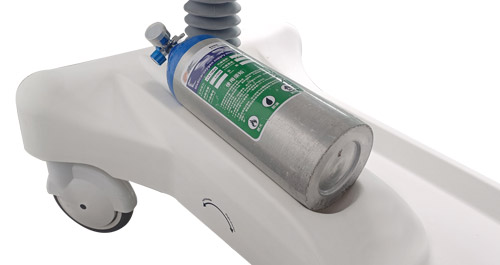


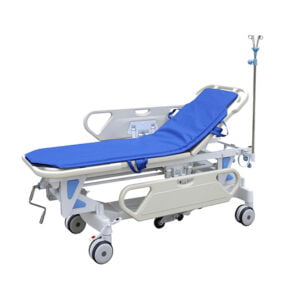
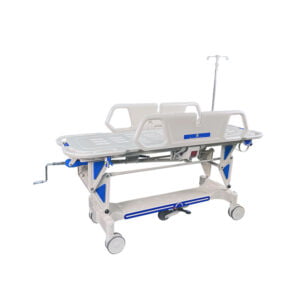

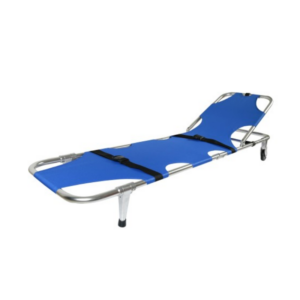
Critiques
Il n’y a pas encore d’avis.